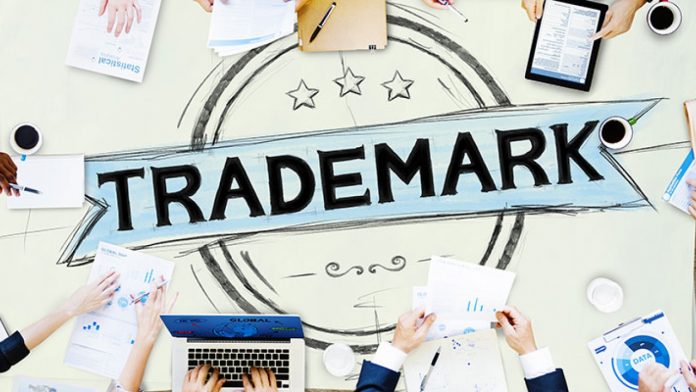This article is written by Gauri Gupta. It provides a detailed analysis of the basic concepts of trademarks and trademark laws in India and elaborates on the goods covered by Class 6 trademarks. Trademark Class 6 falls within the scope of the NICE Classification system and includes within its ambit a range of metal items, including building equipment, hardware, containers, and other metal items required for construction. It plays a crucial role in the registration of trademarks as it helps in distinguishing the metal-based products.
Introduction
The concept of a trademark is not a relatively modern concept. In ancient times, when people used to acquire goods from local craftsmen, the creative entrepreneurs made sure they marked the goods beyond their localities and sometimes over considerable distances. 3000 years ago, craftsmen in India used to inscribe their signatures on their masterpieces before exporting them across borders, mostly to Iran. During the Middle Ages, when trade was flourishing, merchants and manufacturers used these signs to distinguish their goods from others.
However, it was during the time of industrialisation that the trademarks gained immense significance. Since then, trademarks have become a significant element of international trade and commerce in the contemporary world and market-driven economies.
Industrialisation and the expansion of market-driven economies provided manufacturers and traders with the opportunity to provide their customers with a wide range of goods and services within the same category. However, these goods differed in quality, price, and other characteristics, which the consumer could not make out very often. This made it clear that there was an increasing need to guide customers and give them the choice to consider their alternatives so that they could make informed choices between the competing goods. This means that the products are required to be identified, and the method for identifying these products was to name them in the marketplace through trademarks.
Trademarks play an important role for businesses as they help in individualising their products. This helps them reach out to the customers and communicate with them. Thus, trademarks play an important role in rationalising the commercialisation of goods by serving the economy.
Trademarks play a significant role for both consumers and manufacturers. They enable consumers to make informed choices about the goods that are available in the market and, furthermore, encourage manufacturers to maintain and improve the quality of goods that are sold under their trademarks, thus ensuring high-quality goods are produced and economic progress is stimulated.
How can you define a trademark
A trademark is a sign or symbol that can differentiate the goods and services of one business from another. This definition has been provided by the World Intellectual Property Organization (“WIPO”).
In common parlance, a trademark can be understood as a sign that individualises the goods of one business and distinguishes them from the goods of other businesses, which are the competitors of the given business. This definition provides for different functions of a trademark. The functions of a trademark are interdependent but are to be looked at together for practical purposes.
The origin function mentioned above pertains to the ability of the trademark to differentiate the goods and services of one business from those of others, thus enabling customers to distinguish the products and services that are sold under that trademark from those of other enterprises. This perspective is outlined in Section 1(1)(a) of the WIPO Model Law for Developing Countries on Marks, Trade Names and Acts of Unfair Competition of 1967 (“Model Law”).
Furthermore, it is crucial to highlight that enterprises are responsible for marketing their products and services, and thus, the enterprise can either be a manufacturer or a merchant.
Functions of a trademark
Trademarks have several functions. The primary function of trademarks is to indicate the origin of the goods and distinguish them from other goods. This forms the basis of legal protection and plays a crucial role in ensuring that customers can rely on the high and consistent quality of goods that are being offered under that trademark. The same is sometimes referred to as the quality function or the guarantee function of the trademark.
Further, the owner of the trademark uses it to communicate with consumers in advertising, sometimes referred to as the advertising function of the trademark. Trademarks can also become a valuable piece of property for the owner because of their acquired reputation, thus allowing him to licence or franchise them and, thus, make them available for commercial use. This implies that trademarks serve economic functions that are not safeguarded by the trademark law.

Instead, it relies on how the owner uses the trademark. The same is applicable to the quality function of the trademark. When a consumer assesses the quality of a product, it is crucial for them to understand that they need to take actions based on unfair competition laws or on specific consumer protection legislation, as the trademark law does not provide for remedies in these cases.
Need for legal protection of a trademark
It is crucial to legally safeguard the trademarks to ensure that they can perform their distinguishing functions, thus allowing customers to make informed decisions between various similar kinds of products that are available in the market. In cases where trademarks are not protected, competitors use identical signs to sell the same or similar kinds of goods on the market. This leads to confusion among the competitors regarding the origin of the goods and services.
In most cases, the customer or consumer who has been deceived does not realise that the goods he purchased or the services he availed of are not of the same origin as indicated by the trademark. As a result, trademark owners are held accountable if their product does not meet the expected standards of consumers. Even in cases where the consumer realises that they were misled into purchasing a product because of a confusingly similar trademark, it can be challenging for them to take action against the one who infringed their right. Therefore, the practice is that the owners of the protected trademarks have the right to prevent their competitors from using identical or confusingly similar trademarks for goods and services that are similar or identical to those covered by their own trademark. This provides for the exclusive rights of the trademark owner.
How to safeguard your trademark
Trademarks can be safeguarded either on the basis of their use or on the basis of registration. These two approaches have been developed across the world historically. However, even in contemporary times, trademark protection systems across the world encompass both of these ingredients.
The contracting parties are under an obligation to register their trademark as per the Paris Convention for the Protection of Industrial Property of March 20, 1893 (“the Paris Convention”). More than a hundred states are signatories to the Paris Convention, and nearly all the countries across the globe provide for the registration of the trademark to ensure its full protection.
However, it is crucial to note that “use” plays a significant role in protecting the trademark. What is pertinent to note here is that all the countries that have traditionally based trademark protection on use get their trademarks registered only to confirm that trademark rights have been acquired by them by using the said trademark. This means that in cases of trademark disputes, priority is given to the first user rather than the individual who registered the trademark first. This principle is practised in the United States, the Philippines, Indonesia, and other countries that follow the traditional British Model, including Hong Kong, Singapore, and India.
On the other hand, there are a few countries, such as the Maldives and Bhutan, that have no trademark registration at all. This approach assumes that trademark registration is in place within the participating countries and focuses on issues related to the registration of trademarks and the rights arising from them.
Service marks and other signs
In the contemporary era, customers have an extensive range of goods and services available at both national and international levels. Therefore, it is crucial to differentiate between various types of services, such as those provided by insurance companies, car rental agencies, airlines, and others. These identifiers are known as service marks and serve to indicate the origin of the services and distinguish them in the same way trademarks distinguish goods.
It is important to recognise that modern trademark laws protect service marks in the same way they protect trademarks for goods. Furthermore, there are many other distinctive signs that hold significant economic value. These include collective marks, certification marks, appellations of origin and trade names, among others. These signs have certain common features with trademarks and often an enterprise uses the same sign as both the trademark and trade name or collective mark. However, it is crucial that these signs are distinguished from each other.

Registrable trademarks
It is pertinent to note that there must be two elements in a trademark for it to be eligible for registration. These two elements include (i) a sign and (ii) distinctiveness.
- Signs: Any sign that is capable of distinguishing the goods of one business from its competitors is capable of being registered as a trademark. Therefore, trademark laws should not provide a comprehensive list of signs that are capable of registration. Further, if illustrations are provided, they should signify the practicality of what can be registered but should not be exhaustive in nature. Furthermore, in case there are limitations, they should be based only on practical considerations.
The following types and categories of signs can serve to distinguish the goods of one enterprise from another. This is not exhaustive in nature.
- Words: This category includes the names of the companies, surnames, given names, geographical names, along with any other word or phrase, whether invented or not, along with slogans. An example of the same is brand names, including Apple and Gabbana.
- Letters and numerals: It includes single or multiple letters, single or multiple numerals, and any combination of letters and numerals. The half-eaten apple with a leaf, which is the logo of the brand Apple, is an example of the same.
- Devices: The category of devices covers artistic devices, drawings, and symbols, along with both two-dimensional and three-dimensional representations of goods and containers. A popular example of device marks includes the symbol of Android.
- Combinations: A combination of any of those mentioned above, including different types of logos and labels, functions as distinctive signs. The most famous example of a combination being trademarked is that of the golden arch of the McDonald’s logo, which has the text of McDonald’s underneath it.
- Three-dimensional signs: These encompass the shapes of products or their packaging. A famous example is that of the three-pointed Mercedes star, which serves as a trademark.
- Audible signs (sound marks): Sound marks can be categorised into those that can be transcribed into musical notes or other symbols, such as an animal’s cry. The sound of the twentieth-century fox, consisting of the sounds of drums and strings, is an example of a registered sound trademark.
- Olfactory marks or smell marks: This includes the scents, such as those of the fragrance of a perfume, that the customers are able to recognise. Customers easily recognise the smell of Play-Doh and can associate it with the brand Play-Doh, which is a popular example of a registered olfactory mark.
- Other signs: These include invisible signs such as those recognised by touch.
Countries all across the globe set up certain limitations on the registration of trademarks and the same is done for practical purposes. In common parlance, countries permit the registration of those signs, which can be represented graphically. The rationale behind the same is that the particular sign can be registered physically and can be published in the trademark journal. As a result, it is capable of informing the public that the same has been registered with the appropriate authority and is thus a registered mark.
Most countries provide for the registration of three-dimensional trademarks. However, the applicants are required to submit a two-dimensional representation, a description, or both of the three-dimensional signs. In practice, there is always confusion about what can be protected as a three-dimensional sign.
A famous example of the same is the two-dimensional representation of the bottle of Coca-Cola, which is registered as a trademark in Switzerland. To comply with the trademark laws of the contemporary era, the Coca-Cola Company is required to use these two-dimensional drawings for the packaging of their products. This approach fails to meet the practical needs of trade and industry. The rationale behind the same is that if a three-dimensional mark is registered using a two-dimensional representation, it has to be protected in its three-dimensional form. The use of these three-dimensional forms must be considered the use of the registered trademark. However, modern laws fail to reflect the same.
Similar issues exist with audible signs. An example of the same is the sequence of musical notes, which can be registered as a device mark. This registration does not protect the actual musical phrases expressed, but rather protects the sequence of notes that can be registered as a device mark. This illustrates the limitations of the current trademark laws in addressing the practical realities of how these trademarks are to be used in the industry. They further highlight the need for evolving the current legislation surrounding trademarks to ensure that they better align with contemporary business practices.

Unregistrable signs
As explained above, registrable trademarks must always have two elements. This includes a sign and further enhances the ability of that sign to be distinguishable. If the sign is not distinctive in nature, it will not function as a trademark and will not be registered. However, it is not always important for the applicant to prove the distinctiveness of the sign. It depends on the discretion of the registrar. It is important to note that, in case of doubt, the registrar must always register the trademark. Certain trademark laws, including the British Trade Marks Act, 1938 and countries following the British approach, provide that the onus of showing that the mark ought to be registered is on the applicant.
Herein, it is relevant to note that trademarks that are likely to be deceptive to the public due to their nature, quality, or any other characteristic such as their geographical origin will not qualify for registration since they are deceptive to the public and thus against public interest.
The test for determining whether the sign is deceptive or not is intrinsic deception. It is inherent in the trademark itself. It is important to note that the test of intrinsic deception should be clearly distinguished from other tests, such as the test for the risk of confusing consumers or customers by the use of identical or similar trademarks for identical or similar goods.
It is important to note that the more misleading a trademark is, the easier it is to misuse it. This is because the trademark does not correspond to the actual characteristics of the good it describes. A popular example of the same is the trademark ORWOOLA, which is applicable in the case of clothing. This trademark is fully descriptive and applicable to goods that are made entirely of wool. It provides for non-woollen goods, but it is misleading on the face of it.
The general rule to be followed is that acquired distinctiveness cannot be a reason for allowing a deceptive mark to be registered. Further, it is important to note that trademarks lose their deceptiveness through long and extensive use, which can become an exception to the general rule in certain cases.
Trademark registration in India
As per Section 2(zb) of the Trademarks Act, 1999, “a trademark is a distinctive mark that is capable of distinguishing the products or services of one enterprise from its competitors in the market.” The registration of trademarks plays a crucial role in protecting the rights of an enterprise. This is because the enterprise that has its trademark registered can use the mark in association with its goods and services. Thus, the registered trademark provides him with a shield against infringement and empowers him to take legal action against the unauthorised use of his registered trademark. It is crucial to note that the registration of a trademark is valid for a period of ten years, following which it can be renewed for an indefinite period.
Who is eligible to apply for the registration of trademarks in India
In India, trademark registration is available for a wide range of entities, including the following:
- Individuals
- Joint owners of a company
- Proprietorship firms
- Partnership firms (with a maximum of ten partners)
- Limited liability partnerships (LLPs)
- Indian companies
- Foreign companies
- Trusts
- Societies
The legislation has made a deliberate attempt to include various businesses and entities in this list to ensure that their brands and identities are safeguarded through the registration of trademarks.
Types of trademarks registrable in India
Various types of trademarks or brand name registrations serve different needs and purposes. The aim is to ensure that customers are able to recognise the products and services that are associated with specific manufacturers and service providers. In India, the following categories of trademark registration are available:

- Product mark: A product mark is attached to goods and products that help in identifying their origin and maintaining the reputation of the company. Trademark applications under classes 1 to 34 fall within the category of product marks as they provide for tangible items.
- Service mark: A service mark functions in similar ways to that of a product. However, it is used to identify the services rather than the physical products or the goods. Trademark applications in classes 35 to 45 fall within service marks.
- Collective mark: A collective mark provides for particular attributes of products and services that are linked to a specific group. It allows individuals and organisations to collectively protect and represent the goods and services of these individuals and organisations. The holder of a collective mark can be an association, a public institution, or a corporation.
- Certification mark: A certification mark is issued to provide information about the designs of the product, their composition, quality, and other relevant details. These certification marks set standards for products and assure consumers that the product adheres to established quality benchmarks. Certification marks can be found on packaged goods, toys, and electronics.
- Shape mark: Shape marks are used to protect the unique shapes of the product, allowing consumers to easily identify it as that of a particular manufacturer. It is important to note that the registration depends on the shape, which is being recognised as distinctive in nature.
- Pattern mark: These marks are applied to products that have distinctive, designed patterns and help in distinguishing them. The patterns must be clearly identifiable and unique to quality for registration.
- Sound mark: These are unique audio sounds that are associated with the products and services of specific providers. These audio cues are also referred to as audio mnemonics and are typically found at the beginning or end of advertisements. The IPL tune is one of the most popular examples of sound marks.
How to choose the correct trademark class
Trademark classes are crucial for registering the trademark. This is because the goods and services are divided and categorised into 45 different classes. It is important to choose the right class of trademark since it determines the validity of the trademark registration. It is necessary to keep in mind the competitor’s mark and the possibility of expanding the company while choosing the class within which the trademark can be registered. Some of the most commonly used trademark classes in India include:
- Class 9 provides for computer software and electronics.
- Class 25 provides for clothing.
- Class 35 provides for the management of businesses and advertising.
- Class 41 pertains to education and entertainment.
Searching a trademark
It is essential to conduct a thorough and comprehensive trademark search to preserve the identity of the brand, its uniqueness and its integrity. The process of searching for a trademark involves submitting the brand name along with the corresponding class for examination. The importance of a trademark search lies in its capacity to identify the already existing trademarks on the market. Additionally, it also helps in evaluating potential conflicts, thus safeguarding the brand and its identity.
Documents and details required for trademark registration
The following documents and details are required for the registration of a trademark:
- Name of the applicant: The name of the individual, company, or organisation that is seeking the registration of a trademark.
- Types of business: Applicants must identify the nature of their business entities such as whether they are sole proprietors, partnerships, private limited company, etc.
- Business objectives: Applicants are required to provide an overview of their business activities.
- Brand/ Logo/ Slogan name: The name, logo, and slogan that the applicant has the intention to trademark.
- Registration address: The applicants are required to provide the official address of the entity for which they are applying for the registration of the trademark.
The applicants are also required to submit certain documents, including a PAN card if an individual, an Aadhar card, a GST certificate in the case of a proprietorship, an incorporation certificate of the company, a PAN card of the company, an MSME certificate, a logo, partnership deeds of the partnership firm, a partnership PAN card, a limited liability deed in the case of a limited liability partnership, a trust deed, and a trust PAN card.
Trademark classes
Trademarks are categorised into various classes on the basis of the goods and services they represent. A trademark classification has been established by the WIPO and is popularly known as the NICE Classification. There are 45 different classes as per this classification, with each category representing a specific category of goods and services.
The class list of trademarks provides for a comprehensive framework wherein goods and services are divided into different categories. This class list plays a significant role for businesses that aim to safeguard their intellectual property rights and, furthermore, helps in identifying the category that is best suited for a particular good or service.
Trademark Class 6

Trademark Class 6 is one of the NICE Classification that plays an important role in the manufacturing and construction industry, ranging from large architectural structures to everyday tools. It provides for a wide range of products, including common metals and their alloys and ores, metal materials for building and construction, transportable buildings of metal, non-electric cables and wires of common metal, small items of metal hardware, metal containers for storage or transport, and safes. It includes mainly unwrought and partly wrought common metals, including ores, as well as certain goods made of common metals.
- Common metals and their alloys
This includes iron, steel, aluminium, and other metals and their alloys. It includes metal items such as nails, screws, wire, and pipes that are essential in construction and manufacturing.
Example: Tata Steel is one of the largest producers of steel in the world and is engaged in the business of steel bars, sheets, and other metal building materials, steel nails, and solid fasteners for carpentry and construction projects.
- Metal building materials
This class includes metal products that are used in construction, including roofing materials, gutters, fencing, metal beams, sheets, and structural elements.
An example of the same is the Steel Authority of India Limited (SAIL), which is one of the largest state-owned steel-making companies in India and is engaged in the manufacturing of metal sheets, bars, rods, and other steel products for industrial use.
- Transportable buildings of metal
This includes prefabricated metal buildings and metal sheds that allow for quick and efficient construction of warehouses, hangers, and other temporary structures.
An example of the same is Thyssenkrupp, which is a German multinational conglomerate in industrial engineering and steel production, metal building materials, and metal structures.
- Non-electric caves and wires of metal
This category includes non-electric metal cables and wires that are used in lifting, securing, and transporting heavy loads, which are crucial for the logistics and transportation industries, such as metal ropes and cables.
An example of the same is KEI Industries Limited, which is an established player in the stainless steel wire segment and is among the largest stainless steel wire manufacturing companies in India.
- Small items of metal hardware
This category includes various metal tools and hardware, including hinges, locks, and hand tools, screws, nails, bolts, and hinges.
- Transport and storage containers
This includes products that range from metal barrels, metal tanks, cans, and boxes to shipping containers that facilitate transportation and storage. An example of the same is JSW Steel, which is one of the leading integrated steel manufacturers in India engaged in the business of steel drum containers used for storing and transporting liquids and bulk materials.
- Safes
This category includes metal safes and strongboxes, which protect valuables, documents, and other important items, ensuring their safety against damage and theft. Godrej and Boyce is an example of one of the most trusted brands in India that is engaged in the manufacturing of high-quality locks.
Inclusions and exclusions under Trademark Class 6
Trademark Class 6 includes the following:
- Metals that are in foil or powder form intended for further processing, such as in the case of 3D printing,
- Metal construction materials, including components for railway tracks, metal pipes and tubes,
- Small metal hardware items, including bolts, screws, nails, furniture casters, and window fasteners,
- Portable metal buildings or structures, like prefabricated houses, swimming pools, animal cages, and skating rinks,
- Metal dispensing apparatus, which can either be manual or automatic, such as towel dispensers, queue ticket dispensers, dispensers for dog waste, and toilet paper dispensers.
- Various products that are made from common metals that are not categorised by their specific function or use, including general-purpose metal boxes, metal statues, busts, and metal artwork.
However, Class 6 excludes the following specifically:
- Metals and ores utilised in industry or scientific research for their chemical properties, such as bauxite, mercury, antimony, and alkaline or alkaline-earth metals, fall under Class 1.
- Metals in foil and powder forms intended for use in painting, decorating, printing, and art are categorised under Class 2.
- Certain dispensing devices are classified based on their specific function or purpose, including fluid dispensing machines for industrial applications (Class 7), electronic ticket dispensing terminals (Class 9), medical dosage dispensers (Class 10), and adhesive tape dispensers (Class 16).
- Electric cables are classified under Class 9, while non-electric cables and ropes, not made of metal, are under Class 22.
- Pipes that are components of sanitary installations fall under Class 11, while flexible pipes, tubes, and hoses, not made of metal, are under Class 17, and rigid pipes, not made of metal, are classified under Class 19.
- Cages designed for household pets are categorised under Class 21.
- Certain items made from common metals are categorized according to their function or purpose, such as hand-operated tools (Class 8), paper clips (Class 16), furniture (Class 20), kitchen utensils (Class 21), and household containers (Class 21).

Who can file an application under Trademark Class 6
Section 16 of the Trademarks Act, 1999, provides for the application of the trademark. It stipulates that the following can apply for an application for the registration of a trademark:
- any person who is claiming to be the proprietor of the trademark that is either used or proposed to be used by him, or
- who has the desire to register it.
Trademark filing process in India for Class 6 Trademarks
Once the search for a trademark is complete, the next step is to file the application for registering the trademark with the Registrar.
The process of Vienna Codification
The Vienna Codification is also referred to as the Vienna Classification and is an international system that categorises the figurative components of trademarks. Once an application for the registration of the trademark is submitted to the registrar of trademarks, the Vienna Codification is applied to the figurative components of the trademark.
Trademark search
A detailed trademark search is required to be conducted to ensure that the proposed trademark is unique and does not conflict with the existing trademarks under Trademark Class 6. This search can be conducted online through the official website of the trademark registry.
Prepare and draft the trademark application

For preparing and drafting the trademark application form (TM-A), the following information and documents are required to be collated:
- A clear representation of the trademark
- Details of the applicant, including the name, address, and nationality
- Description of the goods and services that are associated with the trademark
- Date of first use (if it is applicable)
- Power of Attorney (if it is filed through an attorney)
- Digital signature of the applicant
The application can be filed online through the official website or a physical application can be submitted at the nearest Trademarks Registry office.
Submission of the trademark application
The trademark application can be submitted online or offline by paying the requisite fees. The fee varies depending on whether you are an individual, a startup, a small enterprise, or a large corporation.
Trademark examination
After the completion of the Vienna Codification, the trademark registration application is assigned to the registrar’s office, which is then required to access the application for accuracy. After accuracy is established, the registrar generates a trademark examination report. It is on the basis of this report that the application is accepted or rejected. Once accepted, it is allowed for trademark journal publication, wherein further objections can be raised before the completion of the registration process.
In cases where there are objections to the registration of a trademark, the applicants can address these concerns before the trademark officer. If the trademark officer is of the opinion that the justification of the applicant is satisfactory in nature, the trademark will be approved for publication in the trademark journal.
Publication of the trademark in the trademark journal
After the trademark registration application is approved by the registrar, the trademark is published in the trademark journal. This journal is released weekly and consists of information on all trademarks that have been submitted for registration and have been approved by the registrar. Once the trademark is published in the journal, the public has the opportunity to file objections in case they believe that the registration of that particular trademark may negatively impact their interests. Furthermore, it is important to note that if no objections are raised within a period of 9- days from the date of publication, the trademark is eligible for registration and will be registered for a period of twelve weeks.
Trademark hearing
In case a third party objects to the registration of the trademark, a meeting is to be scheduled by the trademark hearing officer. The applicant and the opposing party are given a chance to present their arguments in this meeting, and it is on the basis of this hearing and the evidence presented that the trademark hearing officer decides whether the application is accepted or rejected.
Trademark registration
A trademark registration certificate is to be prepared and issued in case there are objections or oppositions to the registration of a trademark. Once the trademark registration certificate is issued, the trademark is considered to be officially registered. At this juncture, it grants the owner exclusive rights to the mark. For example, if no objections or oppositions are posed to the registration of a logo as a trademark, a trademark registration certificate is issued, following which the logo will be a trademark.
Trademark objection
One of the initial stages in the registration process pertains to the objections to the registration of the trademark. The register, instead of simply denying the registration process, seeks valid reasons and explanations regarding the registration of the trademark.

What is opposition to trademark
It is when the third party files an objection against the registration of a trademark that the opposition to the trademark occurs. This opposition is accepted by the registry from any natural or legal person, which can include individuals, businesses, partnership firms, and trusts.
Registration certificate
If there are no valid objections or if the objections are resolved, the registrar will issue a certificate of registration for a Trademark under Class 6. This registration certificate confirms the exclusive right to the mark being within Trademark Class 6.
Trademark renewal
Once the trademark is registered successfully, it remains valid for a period of ten years from the date on which it is filed. To ensure that the trademark is continuously protected, it is to be renewed after a period of ten years, following which it will be protected for an indefinite period.
Detailed list of goods classified under Trademark Class 6
Conclusion
Trademark Class 6 forms a strong foundation upon which industries are built. Businesses that are aiming to register trademarks under Class 6 are usually involved in a wide range of metal products, ranging from raw materials to finished goods. In other words, for businesses that are operating in metal goods, trademarks under Class 6 are crucial since they establish the recognition of the brand and trust.
Trademark Class 6 forms a strong foundation upon which industries are built. All the businesses that aim to be registered under this class are involved in a wide range of metal products, which range from raw materials to finished goods. In simpler words, all businesses working with metal goods are required to register themselves under Class 6 to ensure that the brand is protected and their customers trust them.
The scope of Class 6 encompasses a wide array of metal products, including raw materials such as ores and allows, semi-finished products such as metal sheets and rods, and finished goods such as non-electric cables, hardware items, and containers. The inclusive characteristics of this list explain the significance of this class for various industries, including construction and infrastructure industries, automotive and aerospace industries, and hardware and packaging industries, among others.
It is pertinent to note that the advantages of protecting trademarks under Class 6 go beyond the recognition of the brand and the trust of customers. It plays a significant role in facilitating the expansion of markets and safeguarding brands from infringement and misuse by competitors.
The registration of a trademark, thus, not only secures the identity of the brand but also paves the way for the sustainable growth of the business in the industry. Companies and brands can use their trademarks to enhance their visibility, protect their intellectual property, and build long-term trust for their customers, thus ensuring profitability and leadership in the economy.
Frequently Asked Questions (FAQs)
What is the definition of a trademark?
A trademark is a distinguishing mark that helps distinguish the goods and services of one enterprise from those of its competitors. It can be a word, phrase, symbol, design or a combination of any of these. It is crucial to note that it should be able to distinguish the goods or services and associate them with a particular brand.
Why is it important to get the trademark registered?
The registration of trademarks plays a crucial role for all brands and businesses. The rationale behind the registration of a trademark is to protect the right of the trademark owner or proprietor to use the mark and ensure that the same is not misused or infringed by the competitor. Furthermore, registration of a trademark provides the proprietor with recourse to legal remedy in case of infringement or misuse of the trademark. It is crucial to get the trademark registered since it protects the right of the owner to use the mark and further provides legal recourse against infringement. The registration is valid for a period of ten years and can be renewed after that.
Who can apply for the registration of a trademark in India?
As per the Trademarks Act, 1999, the following are eligible to apply for the registration of trademarks in India: a) individuals, b) companies, c) proprietorship firms, d) partnerships, e) limited liability partnerships, f) Indian and foreign companies, g) trusts, and h) societies.
Why is the search for a trademark necessary?
It is crucial to conduct a trademark search before filing an application for the registration of a trademark with the trademark registrar. A trademark search plays a crucial role in ensuring the uniqueness and exclusivity of the brand since it helps in identifying the pre-existing trademarks in the market.
What is NICE Classification?
The system of NICE Classification is an international system of classification wherein goods and services are classified for the purposes of registration. It provides for a list of trademark classes, which are attached with explanatory notes highlighting the list of goods and services in alphabetical order. The class headings provide for the nature of the goods and services.
What are the details and documents that are required for the registration of the trademark in India?
For a trademark to be registered in India, the applicant is required to furnish the following details and documents: a) the name of the applicant; b) the type of business; c) the objectives of the business; d) the brand, logo or slogan name; and e) the address of registration.
The documents required for the registration of the application vary according to the type of applicant filing for registration. The documents that are always required, irrespective of the type of application filed for registration, include: a) PAN card; b) Aadhar card; c) GST certificate; d) incorporation certificate; and e) partnership deed.
References
- https://www.bbau.ac.in/dept/Law/TM/11.pdf
- https://ebizfiling.com/blog/trademark-class-6-common-metals-and-their-alloys-metal-building-materials/
- https://www.indiafilings.com/trademark-registration
Students of Lawsikho courses regularly produce writing assignments and work on practical exercises as a part of their coursework and develop themselves in real-life practical skills.
LawSikho has created a telegram group for exchanging legal knowledge, referrals, and various opportunities. You can click on this link and join:
Follow us on Instagram and subscribe to our YouTube channel for more amazing legal content.
 Serato DJ Crack 2025Serato DJ PRO Crack
Serato DJ Crack 2025Serato DJ PRO Crack










 Allow notifications
Allow notifications



